- Clone
- 1B1-B2 (See other available formats)
- Regulatory Status
- RUO
- Other Names
- Histone H3.1, histone H3/a, histone 1, H3a, H3 histone family, member A, H3/A, H3FA
- Isotype
- Mouse IgG3, κ
- Ave. Rating
- Submit a Review
- Product Citations
- publications
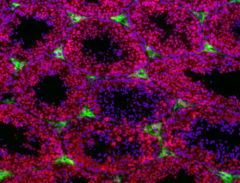
-

C57BL/6 mouse frozen testis section was fixed with 4% paraformaldehyde (PFA) for ten minutes at room temperature, permeabilized with 0.5% Triton X-100 for ten minutes, and blocked with 5% FBS for one hour at room temperature. Then the section was stained with 5 µg/ml anti-Histone H3 (clone 1B1-B2) Alexa Fluor® 594 (red), and 5 µg/ml of anti-mouse CD106 (clone 429 (MVCAM.A)) Alexa Fluor® 488 (green) at 4°C overnight. Nuclei were counterstained with DAPI (purple). The image was captured by 10X objective. -

TE-71 cells were fixed with 1% paraformaldehyde (PFA), permeabilized with 0.5% Triton X-100 for ten minutes and blocked with 5% FBS for 30 minutes. Then the cells were stained with 5 µg/ml anti-Histone H3 (clone 1B1-B2) Alexa Fluor® 594 (red) at 4°C overnight. The following day the cells were stained with Flash Phalloidin™ NIR 647 (green) for 20 minutes in room temperature. Nuclei were counterstained with DAPI (purple). The image was captured with a 60X objective. -

Human paraffin-embedded breast cancer tissue slices were prepared with a standard protocol of deparaffinization and rehydration. Antigen retrieval was done with Tris-Buffered Saline 20X (1.0M, pH 7.4) at 95°C for 40 minutes. The tissue was washed with PBS/0.05% Tween 20 twice for five minutes and blocked with 5% FBS and 0.2% gelatin for 30 minutes. Then, the tissue was stained with 10 µg/ml of anti-Histone H3 (clone 1B1-B2) Alexa Fluor® 594 (red) at 4°C overnight. Nuclei were counterstained with DAPI (purple). The image was captured with a 10X objective. -

Human paraffin-embedded colon cancer tissue slices were prepared with a standard protocol of deparaffinization and rehydration. Antigen retrieval was done with Tris-Buffered Saline 20X (1.0M, pH 7.4) at 95°C for 40 minutes. The tissue was washed with PBS/0.05% Tween 20 twice for five minutes and blocked with 5% FBS and 0.2% gelatin for 30 minutes. Then, the tissue was stained with 10 µg/ml of anti-Histone H3 (clone 1B1-B2) Alexa Fluor® 594 (red) at 4°C overnight. Nuclei were counterstained with DAPI (purple). The image was captured with a 10X objective. -

Human paraffin-embedded colon tissue slices were prepared with a standard protocol of deparaffinization and rehydration. Antigen retrieval was done with Tris-Buffered Saline 20X (1.0M, pH 7.4) at 95°C for 40 minutes. The tissue was washed with PBS/0.05% Tween 20 twice for five minutes and blocked with 5% FBS and 0.2% gelatin for 30 minutes. Then, the tissue was stained with 10 µg/ml of anti-Histone H3 (clone 1B1-B2) Alexa Fluor® 594 (red) at 4°C overnight. Nuclei were counterstained with DAPI (purple). The image was captured with a 10X objective.
| Cat # | Size | Price | Quantity Check Availability | Save | ||
|---|---|---|---|---|---|---|
| 819405 | 25 µg | 118€ | ||||
| 819406 | 100 µg | 296€ | ||||
Histone proteins are classified into core histones (H2A, H2B, H3, H4) and linker histones (H1, H5). Core histones form an octamer, which contains two H2A-H2B dimers and one H3-H4 tetramer. Core histones are predominantly globular except for the unstructured N-terminal tails. Posttranslational modifications, such as acetylation, methylation, phosphorylation, ubiquitination, SUMOylation and ADP-ribosylation occur in histone tails.
Histone modifications induce changes of chromatin structure and thereby affect the accessibility of transcription factors, nuclear proteins and enzymes to genomic DNA, resulting in gene activation or repression. It is known that histone modifications play critical roles in DNA repair, DNA replication, transcription regulation, alternative splicing and chromosome condensation and some diseases including autoimmune diseases and cancers.
Product Details
- Verified Reactivity
- Human, Mouse, Rat, Drosophila
- Antibody Type
- Monoclonal
- Host Species
- Mouse
- Immunogen
- This monoclonal antibody was raised against a peptide sequence derived from the C-terminal domain of human Histone H3 protein.
- Formulation
- Phosphate-buffered solution, pH 7.2, containing 0.09% sodium azide; may contain stabilizer.
- Preparation
- The antibody was purified by affinity chromatography and conjugated with Alexa Fluor® 594 under optimal conditions.
- Concentration
- 0.5 mg/ml
- Storage & Handling
- The antibody solution should be stored undiluted between 2°C and 8°C, and protected from prolonged exposure to light. Do not freeze.
- Application
-
ICC - Quality tested
IHC-F, IHC-P - Verified - Recommended Usage
-
Each lot of this antibody is quality control tested by immunofluorescence staining. For immunofluorescence microscopy, a concentration range of 1.25 - 5 μg/ml is recommended. For immunohistochemical staining on frozen tissue sections, the suggested use of this reagent is 2.5 - 10 µg per ml. For immunohistochemical staining on formalin-fixed paraffin-embedded tissue sections, the suggested use of this reagent is 1.25 - 5 µg per ml. It is recommended that the reagent be titrated for optimal performance for each application.
* Alexa Fluor® 594 has an excitation maximum of 590 nm, and a maximum emission of 617 nm.
Alexa Fluor® and Pacific Blue™ are trademarks of Life Technologies Corporation.
View full statement regarding label licenses - Excitation Laser
-
Red Laser (633 nm)
- Application Notes
-
Reactivity to Drosophila was only verified with the purified format.
- RRID
-
AB_2715800 (BioLegend Cat. No. 819405)
AB_2715803 (BioLegend Cat. No. 819406)
Antigen Details
- Biology Area
- Cell Biology, Chromatin Remodeling/Epigenetics, Neuroscience, Transcription Factors
- Gene ID
- 8350 View all products for this Gene ID
- UniProt
- View information about Histone on UniProt.org
Related Pages & Pathways
Pages
Related FAQs
Other Formats
View All Histone Reagents Request Custom Conjugation| Description | Clone | Applications |
|---|---|---|
| Alexa Fluor® 594 anti-Histone H3 (C-terminus) | 1B1-B2 | ICC,IHC-F,IHC-P |
| HRP anti-Histone H3 (C-terminus) | 1B1-B2 | WB,IHC-P |
| Alexa Fluor® 647 anti-Histone H3 (C-terminus) | 1B1-B2 | IHC-P |
| Purified anti-Histone H3 (C-terminus) | 1B1-B2 | IHC-P,WB |
Customers Also Purchased
Compare Data Across All Formats
This data display is provided for general comparisons between formats.
Your actual data may vary due to variations in samples, target cells, instruments and their settings, staining conditions, and other factors.
If you need assistance with selecting the best format contact our expert technical support team.
-
Alexa Fluor® 594 anti-Histone H3 (C-terminus)
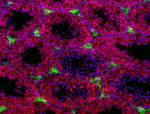
C57BL/6 mouse frozen testis section was fixed with 4% parafo... 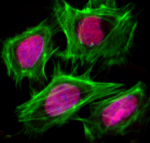
TE-71 cells were fixed with 1% paraformaldehyde (PFA), perme... 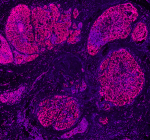
Human paraffin-embedded breast cancer tissue slices were pre... 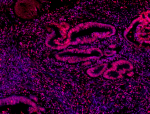
Human paraffin-embedded colon cancer tissue slices were prep... 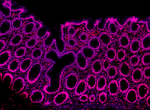
Human paraffin-embedded colon tissue slices were prepared wi... -
HRP anti-Histone H3 (C-terminus)
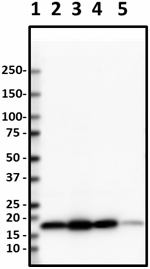
Western blot of HRP anti-Histone H3 (C-terminus) antibody (c... 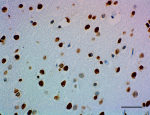
IHC staining of HRP anti-Histone H3 (C-terminus) antibody (c... 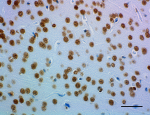
IHC staining of HRP anti-Histone H3 (C-terminus) antibody (c... 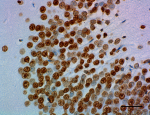
IHC staining of HRP anti-Histone H3 (C-terminus) antibody (c... -
Alexa Fluor® 647 anti-Histone H3 (C-terminus)
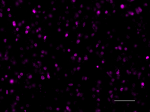
IHC staining of Alexa Fluor® 647 anti-Histone H3 antibody (c... 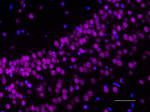
IHC staining of Alexa Fluor® 647 anti-Histone H3 antibody (c... 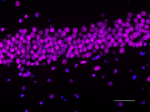
IHC staining of Alexa Fluor® 647 anti-Histone H3 antibody (c... 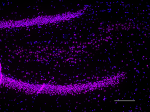
IHC staining of Alexa Fluor® 647 anti-Histone H3 antibody (c... -
Purified anti-Histone H3 (C-terminus)
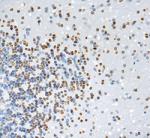
IHC staining of purified anti-Histone H3 (C-Terminus) antibo... 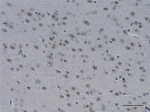
IHC staining of purified anti-Histone H3 (C-Terminus) antibo... 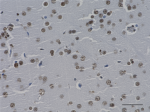
IHC staining of purified anti-Histone H3 (C-Terminus) antibo... 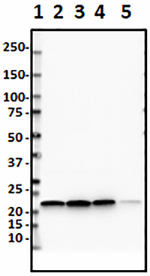
Western blot of purified anti-Histone H3 (C-terminus) antibo... 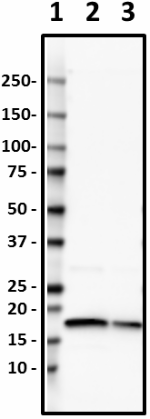
Western blot of purified anti-Histone H3 (C-terminus) antibo...
 Login / Register
Login / Register 










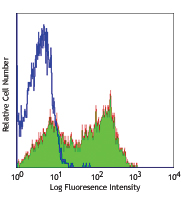
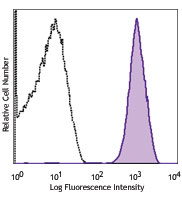
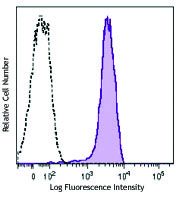
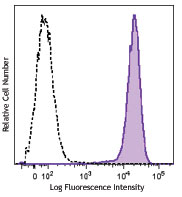



Follow Us